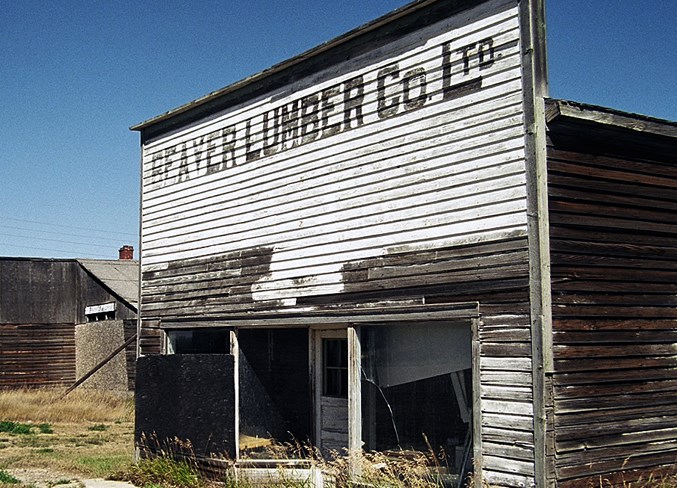DIDSBURY - Didsbury Museum will be wrapping up its coffee and conversation program for the spring with a presentation about ghost towns from Johnnie Bachusky on May 23 from 1 to 3:30 p.m.
Bachusky, the editor of the Innisfail Province (like the Mountain View Gazette, a Great West newspaper), has been visiting, photographing and writing about ghost towns for over 25 years. He has written three books on the subject and given numerous presentations.
"I'm making a PowerPoint presentation," said Bachusky. "I've been doing this for 25 years, writing newspaper stories, magazine articles, books, that sort of thing. It's basically a journey through Western Canada including the Northwest Territories of the hundreds of ghost towns that I've visited over the past 25 years. This presentation will be a little different; it'll be about where this journey has taken me."
Bachusky has spent a number of years working with a cousin in finding out the genealogical roots of his family. Through research, the pair were able to track down an uncle who died in 1923 as an infant and was buried in a grave with just a number.
"We're going to have a special ceremony this summer with a priest to have a blessing of the grave," he said. "He was forgotten about. No one talked about him ever. He died of a crib death at the age of three months, we believe. Walter was his name. We're going to set things right this summer. So it's more about my particular journey with ghost towns and everything, which I still write about. But it's taken me into a more personal journey."
Bachusky said there are hundreds of ghost towns in Western Canada. Towns that were once thriving cities and for various reasons became deserted or mostly deserted.
One such example is Phoenix, in southern B.C., which was once a booming town of 2,000, but is now deserted due to a crash in copper mining.
"In 1921 or 1922 copper prices hit rock bottom and the mine closed," he said. "Everybody left at once. They left it completely abandoned for the next three decades. The buildings were still there, everything. In the 1950s another copper mining company resumed operations using strip mining. They bulldozed the ghost town. All that's left now is the cenotaph and the cemetery. It's a fascinating place. They had a hockey team that once challenged for the Stanley Cup. They once had some 20 bars and hotels. It had all the amenities."
Bachusky said the most well-known ghost town around here is Rowley, which is about 60 kilometres east of Didsbury.
"It was a typical Prairie town that once boomed but fell to hard times largely because of the changing transportation," he said. "Rail lines used to provide transportation to thousands, but as the years went by rail companies began to stop routes to save money and whatnot. With the destruction of the grain elevators, the trains wouldn't go to these little towns anymore. One of the key reasons why a lot of these places in Alberta and throughout Western Canada did become ghost towns is due to changing economics and changing transportation modes."
Bachusky's presentation will feature some of his collection of over 250,000 photographs from ghost towns.
"I break it up into institutions such as hardware stores, schools, grain elevators, community halls," he said. "There will be a selection of photos from that from throughout Western Canada. Water towers and grain elevators have also been huge projects of mine in the past."



